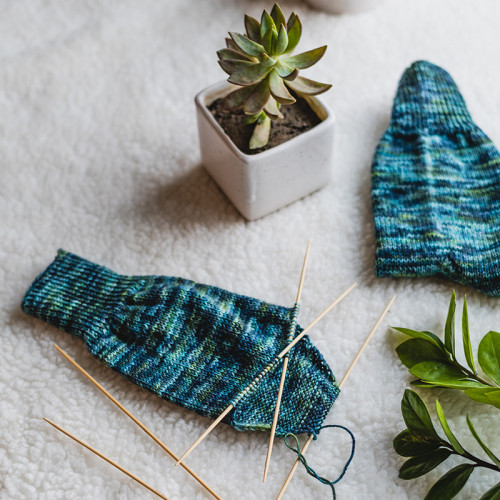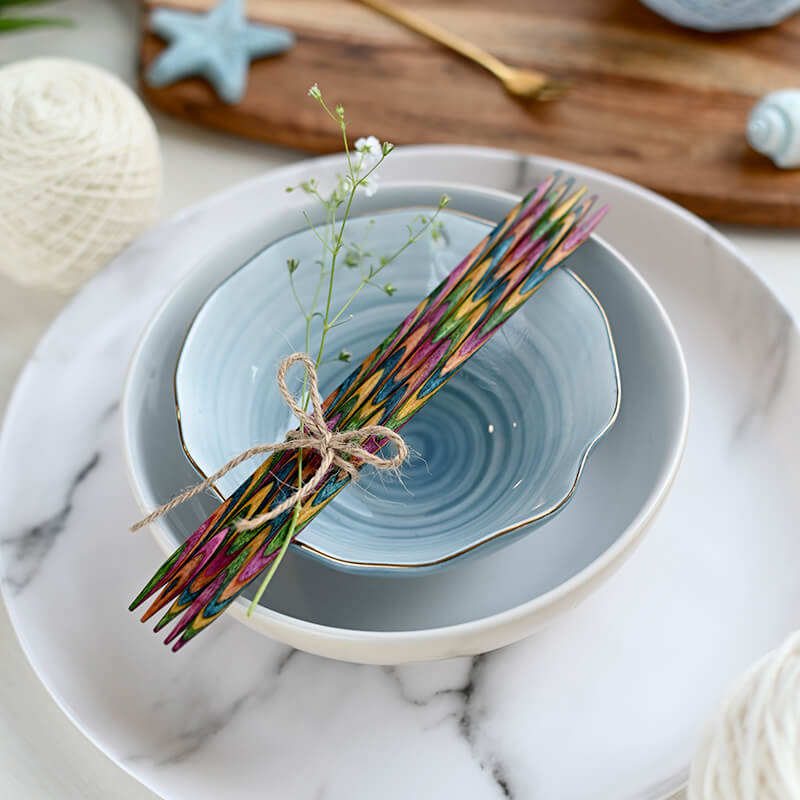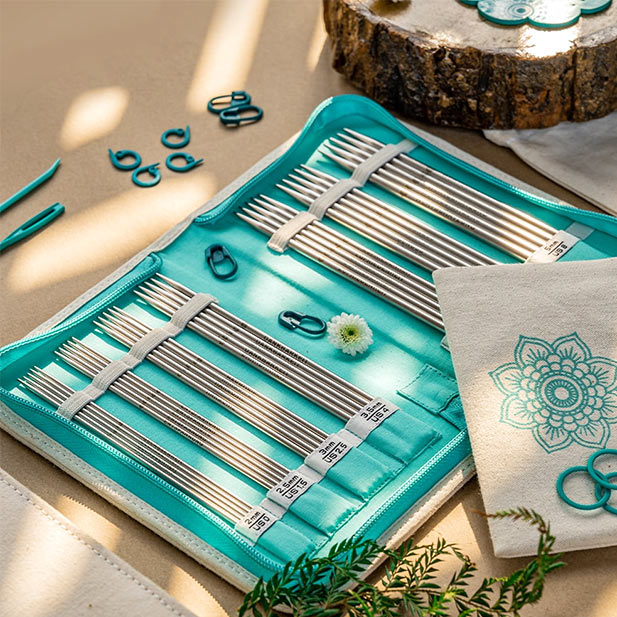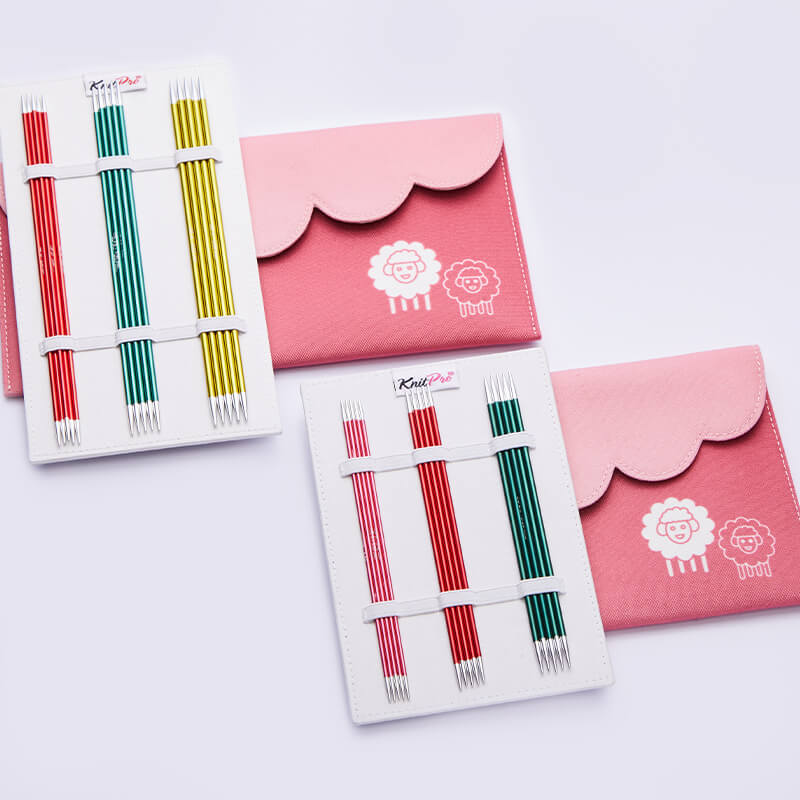- Knitting Yarns Knitting Yarns
-
Brands
Brands
- All brands
-
Addi
›
-
Anna Johanna
›
-
Anchor
›
-
Austermann
›
-
ChiaoGoo
›
-
Clover
›
-
CocoKnits
›
-
Cozy Publishing
›
-
De Rerum Natura
›
-
Dill
›
-
DMC
›
-
Eucalan
›
-
Filcolana
›
-
Gepard Garn
›
-
Hjertegarn
›
-
Holst Garn
›
-
Isager
›
-
Istex
›
-
ITO
›
-
Jenna K. Ihtririekkoknits
›
-
Katia
›
-
Katrinkles
›
-
Knit Pro
›
-
Knitting For Olive
›
-
Kremke Soul Wool
›
-
La Bien Aimee
›
-
Laines du Nord
›
-
Lana Gatto
›
-
Laine Publishing
›
-
Lang Yarns
›
-
Louhittaren Luola
›
-
Lykke Crafts
›
-
Malabrigo
›
-
Markus Company
›
-
Muud
›
-
Noro Yarns
›
-
Neuloosisko
›
-
Opry
›
-
PetiteKnit
›
-
Pom Pom Publishing Ltd.
›
-
Prym
›
-
Regia
›
-
Sandnes Garn
›
-
Schachenmayr
›
-
Scheepjes
›
-
Sesia
›
-
Schoppel-Wolle
›
-
Skein Queen
›
-
Steamery
›
-
Succaplokki
›
-
Sweater Stone Inc.
›
-
Taito
›
-
The Knitting Barber
›
-
Titityy
›
-
Tukuwool
›
- Knitting Needles and Crochet Hooks Knitting Needles and Crochet Hooks
- Knitting and Crochet Patterns Knitting and Crochet Patterns
-
Supplies and Notions
Supplies and Notions
- All supplies and notions
-
Finishing, Washing & Blocking
›
-
Project Bags and Pouches
›
-
Yarn Winders and Swifts
›
-
Needle Storage
›
-
Chart keepers and notebooks
›
-
Stitch Holders
›
-
Stitch markers
›
-
Labels
›
-
Embroidery and Punch Needles
›
-
Measuring tape
›
- Buttons and Clasps ›
-
Lint Removers
›
-
Pins
›
-
Needle Gauge and protectors
›
-
Scissors
›
-
Tools
›
- Yarn Kits Yarn Kits
- Gift Ideas Gift Ideas
- Events Events
- Outlet Outlet
- Gift Card Gift Card
-
Blog
Blog
- All blog
-
Best Patterns for Knitting for Olive Yarns
›
-
Pohjolan emäntä - new pattern for Tukuwool Fingering
›
-
Hopeatiuku Shawl MKAL for Tukuwool Fingering
›
-
New Pattern from Anna Johanna - Timjami
›
-
Suositut norjalaiset neuleet
›
-
Tukuwool Spring 2024 Colors Are Here
›
-
Maxi Soft beanie - Free pattern
›
-
Knit Love Unite Shawl
›
-
Knitwear care
›
-
Yarn suggestion for Laine Magazine Issue 12 Hav
›
-
How is the Tukuwool DK knit-a-along going?
›
-
Fee pattern in April from Sandnes Garn
›
-
December shipping
›
-
Seashore Cowl is a Fall Favorite
›
-
Pohjolan emäntä - new pattern for Tukuwool Fingering *
›
-
For the love of Finnish wool
›
-
Lankavinkkejä Laine Magazine issue 11 Meiramiin!
›
-
English to Finnish Knitting Vocabulary
›
-
Lankaideoita Laine Magazine issue 10 -lehteen
›
-
Urban Knit - moderni neulekirja
›
-
Villapesuohjelman kesähuiviin lankasettejä
›
-
Kevät Fingerless Mittens Pattern PDF
›
-
Crochet Cotton Pads Free Pattern in Finnish
›
-
Ideas to summer knits!
›
-
Onni shawl for Tukuwool Hakamaa Fingering!
›
-
Toivola MKAL begins in July!
›
-
Kotimaisesta villasta ja Tukuwoolin tuotantoketjusta
›
-
Léttlopi and Riddari craze!
›
-
Lankoja Tikkuripaitaan
›
- FAQ FAQ
Austermann
De Rerum Natura
FIL KATIA S.A.
Filcolana
Gepard Garn
Hjertegarn
Holst Garn
Isager
Ito Yarn
Knitting For Olive
Kremke Soul Wool
La Bien Aimee
Laines du Nord
Lana Gatto
Lang Yarns
Lopi
Louhittaren Luola
Markus Company
Noro
Sandnes Garn
Schachenmayr
Scheepjes
Schoppel-Wolle
Sesia
Skein Queen
Tukuwool
Anchor
Blockwallah
ChiaoGoo
Clover
Cocoknits
Cozy Publishing
De Bondt B.V.
Dill
DMC
Eucalan
FIL KATIA S.A.
Ito Yarn
Jim Knopf
Katrinkles
KnitPro
Kremke Soul Wool
Lopi
Lykke Crafts
Markus Company
Muud
Opry
PetiteKnit
Prym
Sandnes Garn
Scheepjes
Steamery
Strikkefeber
Sweater Stone
The Knitting Barber
Titityy
Tmi Succaplokki
Tukuwool
Guide to Choosing Double Pointed Needles for Socks
Julkaistu: 26.02.2024
Finding Your Sole-mate: A Sock Knitter's Guide to Choosing the Right Double Pointed Needles
Are you ready to dive into the wonderful world of sock knitting? Maybe you’re only beginning your journey as a knitter, chosen the perfect yarn for socks but still have some unanswered questions about the right needles. Or you are a seasoned knitter but it is the right time to upgrade your gear. If you've ever been in a yarn store, you know the dizzying array of knitting needle options can feel overwhelming. Fear not! Today, we’re here to be your guides and sock-knitting confidants as we march confidently to the knitting needle aisle to find you the right double pointed needles for your next pair of socks.
Browse Double Pointed Needles
Browse Needle Sets
Difference Between Wooden and Metal Needles
First things first, let's talk materials. Just like shoes, the material of your needles can make a world of difference in your knitting experience. Each material has its own unique characteristics, so it's worth experimenting to see which one feels suitable for your hands.
Are you a traditionalist who loves the warmth and weight of wooden needles? Polished wood is comfortable and makes your stitches glide effortlessly on the needle. Yet the needles are not too slippery - that is perfect for beginner knitters concentrating on working with more than two needles at the same time.

KnitPro Symfonie Wood Double Pointed Needles - Smooth wooden needles in fun laminated color for endless comfort
Bamboo is another renewable needle material with a bit more flexibility and grip than polished wood. Both wooden and bamboo needles usually provide more even knitting tension and tighter stitches than metal.
Perhaps you're a speed demon who thrives on the slickness of metal needles? Stainless steel and aluminium needles are lightweight and have sharp tips to work on those k3tog’s and p3tog’s. Complex stitches and tight tension may sometimes be too much for thin wooden needles, but metal needles won’t bend or break. Just be sure you won’t leave them on your couch unattended! Yes, we have experience in accidentally sitting on all kinds of needles - won’t recommend that.

KnitPro Mindful GRATEFUL Double Pointed Needle Set in Stainless Steel
The Right Needle Size for Socks
Now, let's talk size. Much like Goldilocks, we want our needles to be just right. Too small, and you'll be wrestling with tight stitches that refuse to budge. Too large, and you'll end up with floppy, loose fabric that's more sock puppet than sock. Consult your pattern and the yarn for the recommended needle size, but don't be afraid to swatch and adjust to achieve that perfect gauge. After all, nobody likes a sock that's too tight or too loose!
Sock needles come in regular round shape as well as cubic shape, which provides even more ergonomic knitting experience. Cubic needles have smaller circumference than round needles of the same diameter (millimeter or US size), so you have to choose a larger cubic needle to substitute a round needle. For example 3.50mm cubics corresponds to 3.25mm round needles.
Some General Needle recommendations for sock yarns
Fingering weight Sock yarn 2.00mm to 2.50mm
Sport weight Sock Yarn: 2.75mm to 3.25mm
DK weight Sock yarn 3.50 to 4.00mm
Double-Pointed Needle Lengths
Needle length matters, too. Double pointed needles, DPNs in short, come in various lengths, but 15cm to 20cm is the length to choose for socks. The length you choose will depend on your personal preference and the size of your project. Shorter needles are great for small circumference knitting, like small socks (mittens and sleeves) whereas longer ones are for large socks (or hats). Just be sure to take into account how many stitches you'll be wrangling on each needle, because nobody wants to play a game of pick-up-stitches every time they set down their work.

20cm long Knit Pro Bamboo Double Pointed Needles easily accommodate stitches for a sock of any size
How many DPN's do you use when knitting?
Let's talk about the number of needles in a set. DPNs typically come in sets of five, though you can find sets with fewer or more needles. Again, this comes down to personal preference and what feels comfortable in your hands. Some knitters swear by sets of five, claiming that the extra needle helps distribute the weight of the stitches more evenly. Others prefer sets of four, finding them easier to manage without feeling like they're juggling a circus act. Experiment with different configurations to see which one feels like second nature to you.

Color coded: Zing aluminium dpn's are sold in 15cm Needle Set and 20cm Needle Set and also separately KnitPro Zing Double Pointed Needles. So easy to find the right size!
Lastly, don't forget to consider the tips of your needles. Are you a sharp-tipped ninja who loves to dive into intricate lace patterns? Or are you more of a blunt-tipped butterfingers who prefers simple stockinette stitch? Whatever your preference, make sure your needles can accommodate your knitting style. After all, there's nothing worse than trying to execute a delicate k3tog decrease with a set of dull-tipped needles. Generally metal needles are sharper and bamboo more blunt.
In the end, choosing the right DPNs for your sock knitting adventures is a bit like finding your soulmate. It takes time, patience, and a little bit of trial and error. But fear not, dear knitters, for the perfect pair of needles is out there, just waiting to help you knit the socks of your dreams. So go forth, cast on your next sock with confidence and convenience.
Filcolana Knitwear Collection TIVOLI GARDENS (27.03.2024)
Chunky Sweater Patterns for Brushed, Bulky Yarns (19.03.2024)
Isager Archives Collection Knits 2024 (08.03.2024)
Guide to Choosing Double Pointed Needles for Socks (26.02.2024)
Titityy Favorite Mittens Lempilapaset (08.02.2024)
Tukuwool Sock Yarn is Back with Sustainable Revelation (01.02.2024)
Filcolana Knitting Pattern Collection NORDIC DESIGN (13.11.2023)
The best Muud for knitting (03.11.2023)
Explore Color Fade Yarn Kits (15.09.2023)
Inspiraatio
Follow us
SUBSCRIBE TO TITITYY ENGLISH NEWSLETTER
New email subscriber benefit: 20% discount on Finnish Wool - subscribe now!
Your LYS worldwide
Fast worldwide shipping!
DHL Express shipping usually in 1-2 days!
Outside EU?
Choose your shipping country to show prices without VAT.
Customer Service in English
We are happy to help you!
info@titityy.fi


Shop in English
Fast worldwide shipping by DHL Express!
Visit us
Yarn Shop Titityy
Cygnaeuksenkatu 2
40100 Jyväskylä
FINLAND
Phone +358 40 487 4779
MON - FRI 10 - 18
SAT 10 - 16
SHOPPING TOOLS



